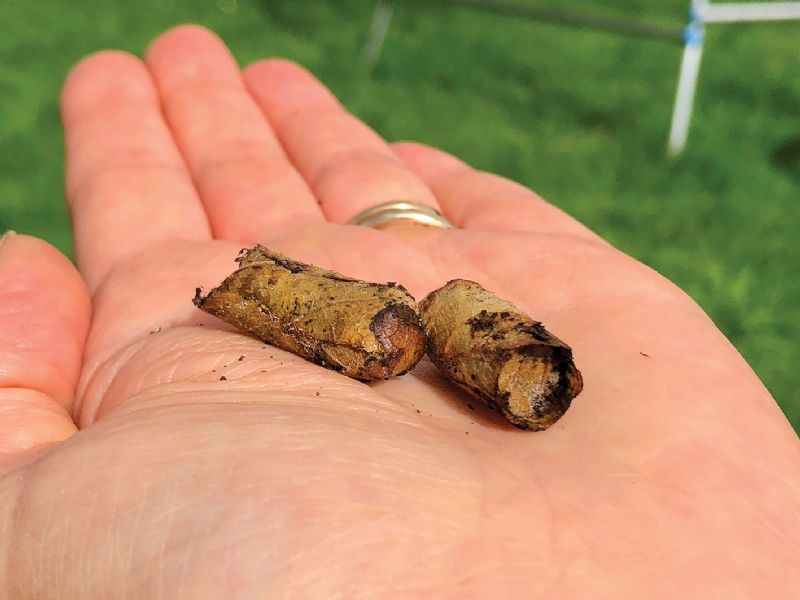- Home
- News, Articles & Reviews
We are hiring! Please click here to join our growing magazine delivery team in Gloucestershire!
Areas
Pets & Wildlife
Archive

Leaf-cutter bees
All Areas > Pets & Wildlife > Wildlife Matters
Author: Dorothy Glen, Posted: Wednesday, 23rd August 2023, 09:00
As I write this article, it’s the summer holidays. I have very limited time to myself, my toddler is asleep and I have a cold – I should be resting (ha! Rest! I note for anyone reading who has young children). Instead, I find myself armed with a children’s garden fork, painstakingly excavating a bag of compost.
A little stripy bottom wiggling into a hole
I’ve actually been quite excited about this. For the past month I have been watching as a small mound of compost formed next to the bag, beneath a tiny hole. What was burrowing into the bag? After setting up my trail cam (yes, I am that person) I was rewarded with a video of a little stripy bottom wiggling into the hole. It was a leaf-cutter bee.
The bees have been visiting the bag for weeks, making tunnels in the compost and then buzzing away, returning with little ovals of leaf to bundle into the bag. With the leaf pieces they construct small cells in the tunnels, deposit nectar, pollen and a single egg inside, then seal the end.
Not being able to leave my compost bag where it was until the spring, I waited until I hadn’t seen any bee activity for a few days, and then opened it up. Using the small fork, I carefully removed the compost around the entry hole and was rewarded with 38 little leafy parcels, all in rows where the bees had burrowed.
They will emerge in the spring
They were a bit damp and fragile, so a couple sadly didn’t make it. One that fell apart contained more than 12 leaf pieces. One older cell briefly lost its front door and I could see the white larvae wriggling inside. I popped the door back in place and left it be. Once I’d removed all the cells, I put them in a little bit of dry compost in a cardboard box, and will keep them safe until the spring when they emerge.
Compost is a popular choice for nesting leaf-cutters, although usually in garden pots rather than bags. They can also burrow into rotten wood, and use hollow plant stems and wall cavities. I have a couple of bee hotels, which were very well used this year by both mason bees and leaf-cutters.
Perfect discs snipped from the leaves
We’ve enjoyed watching them go back and forth between the nest tubes and our small field maple tree, which has been left with perfect discs snipped from its leaves (this does not have a detrimental effect on the plant).
Come September, leaf-cutters will have finished laying and died. Their larvae will grow through the autumn and then hibernate over winter (in my shed!) until the spring. They’re fascinating, non-aggressive little solitary bees, so keep an eye out for them next year!Other Images
Copyright © 2025 The Local Answer Limited.
Unauthorized use and/or duplication of this material without express and written permission from this site's author and/or owner is strictly prohibited. Excerpts and links may be used, provided that full and clear credit is given to The Local Answer Limited and thelocalanswer.co.uk with appropriate and specific direction to the original content.More articles you may be interested in...


© 2025 The Local Answer Limited - Registered in England and Wales - Company No. 06929408
Unit H, Churchill Industrial Estate, Churchill Road, Leckhampton, Cheltenham, GL53 7EG - VAT Registration No. 975613000You are leaving the TLA website...
You are now leaving the TLA website and are going to a website that is not operated by us. The Local Answer are not responsible for the content or availability of linked sites, and cannot accept liability if the linked site has been compromised and contains unsuitable images or other content. If you wish to proceed, please click the "Continue" button below:




